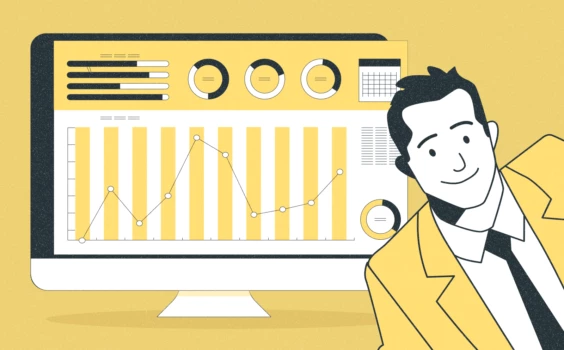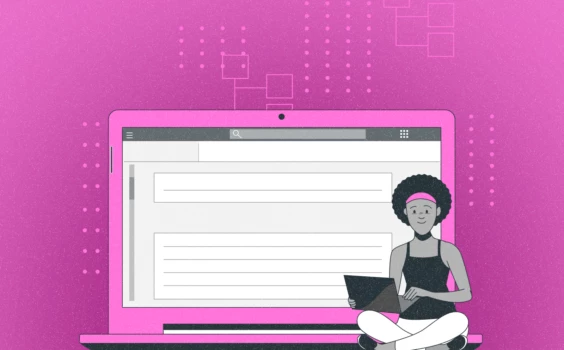Employee Time Clock
An employee time clock is a crucial tool in modern workforce management, serving as a cornerstone for accurate timekeeping and efficient payroll processing. This comprehensive guide delves into the intricacies of employee time clocks, exploring their evolution, types, benefits, and implementation strategies.
What is an Employee Time Clock?
An employee time clock is a device or system used to track the hours worked by employees. It records when employees start and end their shifts, as well as break times. This information is essential for calculating wages, managing overtime, and ensuring compliance with labor laws.
Traditionally, time clocks were physical devices where employees would punch in and out using paper time cards. However, with technological advancements, modern time clocks have evolved into sophisticated digital systems that offer a wide range of features beyond simple time tracking.
The Evolution of Employee Time Clocks
The concept of tracking employee work hours dates back to the Industrial Revolution when factory owners needed a way to monitor worker productivity. The first mechanical time clock was invented in 1888 by Willard Le Grand Bundy, a jeweler from Auburn, New York. His invention, known as the Bundy Clock, used a paper card and a timestamp mechanism to record employee arrival and departure times.
Over the years, time clocks have undergone significant transformations:
1. Mechanical Punch Clocks
These were the earliest form of time clocks, using paper cards and a mechanical stamping mechanism. Employees would insert their card into the clock, which would then stamp the current time on the card.
2. Electronic Time Clocks
Introduced in the 1970s, these clocks used magnetic stripe cards or barcodes to record time entries. They offered improved accuracy and easier data retrieval compared to mechanical clocks.
3. Biometric Time Clocks
Emerging in the late 1990s, biometric clocks use unique physical characteristics like fingerprints or facial recognition to identify employees. This technology significantly reduced time theft and buddy punching.
4. Digital and Cloud-Based Time Clocks
The most recent evolution in time clock technology, these systems allow employees to clock in and out using computers, smartphones, or tablets. Cloud-based solutions offer real-time data access and integration with other HR and payroll systems.
Types of Modern Employee Time Clocks
Today's market offers a variety of time clock options to suit different business needs:
1. Biometric Time Clocks
These use physical characteristics like fingerprints, facial recognition, or retinal scans to identify employees. They offer high security and eliminate time theft but may raise privacy concerns.
2. Proximity Card Time Clocks
Employees use a card or fob that they wave near the clock to record their time. These are easy to use but can be susceptible to buddy punching if cards are shared.
3. Mobile Time Clocks
Apps that allow employees to clock in and out using their smartphones. They're convenient for remote workers but may require GPS verification to ensure accuracy.
4. Web-Based Time Clocks
These allow employees to clock in and out through a web browser on any device. They're flexible and easy to implement but may need additional security measures to prevent unauthorized access.
5. Kiosk Time Clocks
Centralized touchscreen devices where multiple employees can clock in and out. They're ideal for businesses with a single entry point but may cause congestion during peak times.
Benefits of Using Employee Time Clocks
Implementing an employee time clock system offers numerous advantages for both employers and employees:
1. Accurate Payroll Processing
Time clocks provide precise data on hours worked, reducing errors in payroll calculations. This accuracy ensures that employees are paid correctly for their time, including overtime and differential pay.
2. Improved Compliance
Automated time tracking helps businesses comply with labor laws and regulations, such as the Fair Labor Standards Act (FLSA). It provides a reliable record of work hours, breaks, and overtime, which is crucial in case of audits or disputes.
3. Increased Productivity
Time clocks encourage punctuality and discourage time theft, leading to increased productivity. They also provide data that can be analyzed to optimize scheduling and workflow.
4. Simplified Attendance Management
Modern time clock systems often include features for managing paid time off, sick leave, and other absences. This integration streamlines attendance tracking and reduces administrative workload.
5. Enhanced Employee Accountability
With accurate time tracking, employees become more aware of their work hours and breaks. This awareness often leads to improved time management and a sense of fairness among staff.
6. Cost Savings
By eliminating manual time tracking and reducing time theft, businesses can save significantly on labor costs. Automated systems also reduce the time spent on payroll processing and correcting errors.
7. Data-Driven Decision Making
Time clock data provides valuable insights into work patterns, overtime trends, and staffing needs. This information can inform strategic decisions about scheduling, hiring, and resource allocation.
Implementing an Employee Time Clock System
Successfully implementing a time clock system requires careful planning and execution. Here are key steps to consider:
1. Assess Your Needs
Evaluate your business requirements, considering factors like the number of employees, their locations, and any industry-specific regulations. This assessment will help you choose the most appropriate time clock solution.
2. Choose the Right System
Select a time clock system that aligns with your needs and budget. Consider factors such as ease of use, integration capabilities with existing systems, and scalability for future growth.
3. Develop Clear Policies
Create comprehensive policies regarding time clock usage, including procedures for clocking in and out, handling missed punches, and consequences for time theft or buddy punching.
4. Train Employees and Managers
Provide thorough training on how to use the new system. Ensure that both employees and managers understand the policies and procedures related to time tracking.
5. Integrate with Payroll and HR Systems
If possible, integrate your time clock system with your payroll and HR software to streamline data flow and reduce manual data entry.
6. Monitor and Adjust
Regularly review the system's performance and gather feedback from users. Be prepared to make adjustments to policies or procedures as needed to optimize the system's effectiveness.
Legal Considerations and Compliance
When implementing an employee time clock system, it's crucial to be aware of legal requirements and potential compliance issues:
1. Fair Labor Standards Act (FLSA) Compliance
Ensure that your time clock system accurately tracks all hours worked, including overtime. The FLSA requires employers to keep accurate records of employees' work hours and pay.
2. State and Local Laws
Be aware of state and local regulations regarding timekeeping and payroll. Some jurisdictions have specific requirements for meal breaks, rest periods, or rounding of time entries.
3. Privacy Concerns
If using biometric time clocks, be mindful of privacy laws and regulations. Some states have specific laws governing the collection and use of biometric data.
4. Data Security
Implement robust security measures to protect employee time and attendance data. This is particularly important for cloud-based systems that store data off-site.
5. Record Retention
Maintain time and attendance records for the period required by law. The FLSA requires employers to keep payroll records for at least three years.
Challenges and Solutions
While employee time clocks offer many benefits, they can also present challenges. Here are some common issues and potential solutions:
1. Employee Resistance
Challenge: Employees may resist new time tracking methods, viewing them as invasive or a sign of distrust.
Solution: Communicate the benefits of the system, including accurate pay and fair treatment. Involve employees in the implementation process and address their concerns transparently.
2. Technical Issues
Challenge: System malfunctions or connectivity problems can disrupt time tracking.
Solution: Choose a reliable system with good technical support. Have backup procedures in place for when technical issues occur.
3. Time Theft and Buddy Punching
Challenge: Employees may attempt to manipulate the system by having colleagues clock in for them or falsifying time entries.
Solution: Use biometric systems or require photo verification for clock-ins. Implement strict policies against time theft and consistently enforce them.
4. Integration with Existing Systems
Challenge: Difficulty in integrating the time clock system with existing payroll or HR software.
Solution: Choose a time clock system that offers robust integration capabilities or API access. Work with IT professionals to ensure smooth data flow between systems.
5. Managing Remote Workers
Challenge: Tracking time for remote or mobile employees can be complex.
Solution: Utilize mobile time clock apps with GPS verification. Implement clear policies for remote work time tracking and communication.
Future Trends in Employee Time Clocks
As technology continues to evolve, so do employee time clock systems. Here are some emerging trends to watch:
1. Artificial Intelligence and Machine Learning
AI-powered time clock systems can predict staffing needs, detect anomalies in time entries, and automate scheduling based on historical data.
3. Internet of Things (IoT) Integration
Time clocks may integrate with other workplace IoT devices to provide a more comprehensive picture of employee activities and productivity.
3. Advanced Analytics
Future systems will likely offer more sophisticated analytics tools, providing deeper insights into workforce management and productivity trends.
4. Wearable Technology
Smartwatches and other wearable devices may become more prevalent for time tracking, offering seamless and continuous monitoring of work hours.
5. Enhanced Security Measures
As data privacy concerns grow, time clock systems will likely incorporate more advanced security features, such as blockchain technology for tamper-proof record-keeping.
Conclusion
Employee time clocks have come a long way from their humble beginnings as mechanical punch cards. Today, they are sophisticated tools that play a vital role in workforce management, payroll accuracy, and regulatory compliance. As businesses continue to evolve and adapt to changing work environments, including remote and flexible work arrangements, the importance of effective time tracking solutions will only increase.
When implementing an employee time clock system, it's crucial to choose a solution that aligns with your organization's specific needs, complies with relevant laws and regulations, and offers the flexibility to grow with your business. By leveraging the power of modern time clock technology, companies can optimize their workforce management, improve productivity, and ensure fair and accurate compensation for their employees.
As we look to the future, the continued integration of advanced technologies like AI, IoT, and wearable devices promises to make time tracking even more seamless and insightful. These advancements will not only improve the accuracy and efficiency of time tracking but also provide valuable data that can drive strategic decision-making in workforce management.
Ultimately, the goal of any employee time clock system should be to create a transparent, fair, and efficient work environment that benefits both employers and employees. When implemented thoughtfully and managed effectively, these systems can contribute significantly to a company's success and employee satisfaction.


